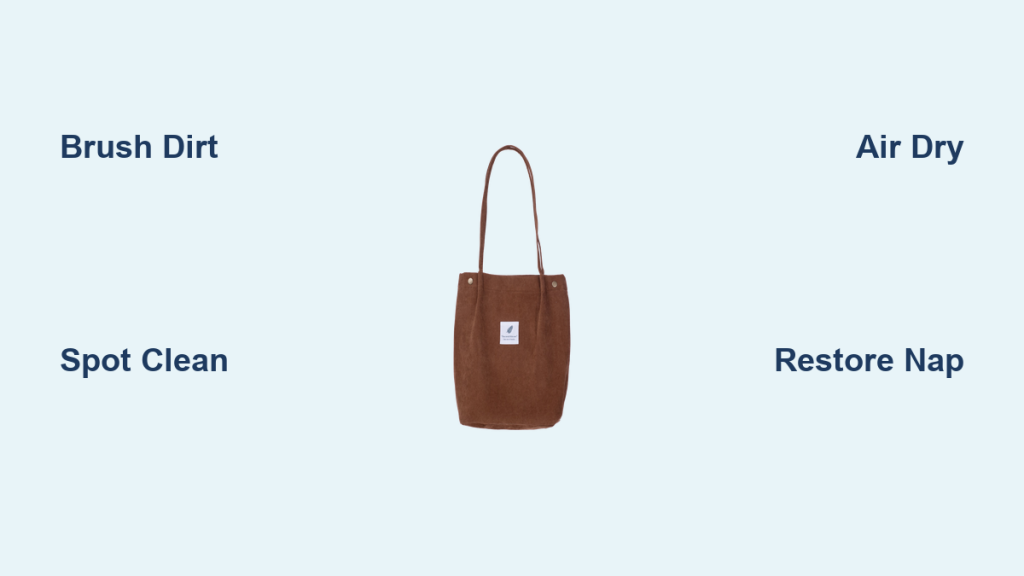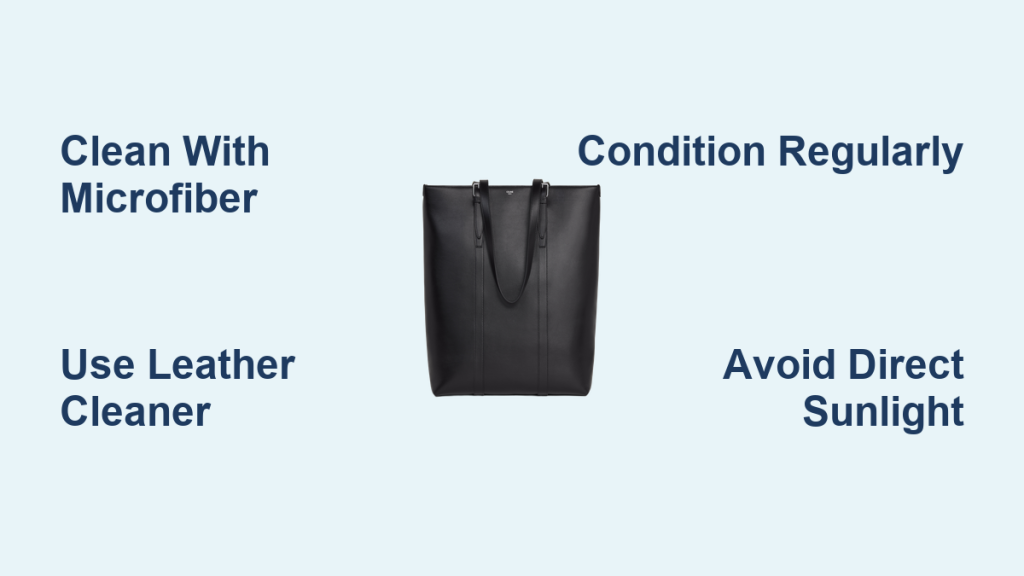Corduroy bags are stylish and durable, but they require specific care to maintain their unique texture and appearance. Dealing with dirt, stains, or simply wanting to refresh your bag can feel daunting. Fortunately, cleaning corduroy isn’t as difficult as it seems! This guide will provide a quick fix for minor dirt and a comprehensive approach to tackling tougher stains, ensuring your corduroy bag looks its best for years to come.
This comprehensive guide will go beyond a simple wipe-down. We’ll cover identifying corduroy types, gathering the right tools, tackling everyday dirt, specific stain removal techniques, drying methods to prevent damage, and preventative measures to keep your bag looking fresh. By the end of this article, you’ll have the knowledge and confidence to clean your corduroy bag effectively and safely, restoring its original texture and vibrancy.
Understanding Your Corduroy Bag

Before diving into cleaning, it’s crucial to understand the type of corduroy your bag is made from. This affects the cleaning approach.
Types of Corduroy
- Standard Corduroy: The most common type, with distinct ridges. Generally more durable.
- Wide Wale Corduroy: Features thicker, wider ridges, offering a more casual look. Requires gentler cleaning.
- Narrow Wale Corduroy: Has finer, closer ridges, resembling velvet. More delicate and prone to damage.
- Stretch Corduroy: Contains elastane or spandex for added comfort and flexibility. Requires careful washing to maintain its shape.
Always check the care label on your bag for specific instructions from the manufacturer. If no label exists, proceed with caution, testing cleaning solutions in an inconspicuous area first.
Gathering Your Cleaning Supplies

Having the right tools makes the process easier and minimizes the risk of damage.
| Item | Quantity | Specifications |
|---|---|---|
| Soft-bristled brush | 1 | Toothbrush, upholstery brush, or dedicated corduroy brush |
| Microfiber cloths | 3-5 | Clean, lint-free |
| Mild detergent | 1 bottle | Specifically for delicate fabrics (Woolite, etc.) |
| Distilled white vinegar | 1 bottle | For stain removal (optional) |
| Baking soda | 1 box | For odor absorption & mild stain removal |
| Spray bottle | 1 | For diluted cleaning solutions |
| Corduroy brush/comb | 1 | (Optional) For restoring pile after cleaning |
Cleaning Everyday Dirt and Dust
Regular maintenance prevents dirt from becoming deeply embedded in the corduroy fibers.
Daily/Weekly Maintenance
- Brush Regularly: Use a soft-bristled brush to gently remove loose dirt and dust after each use. Brush with the nap (the direction the fibers lie) to avoid damage.
- Spot Clean Immediately: Address spills and stains as soon as they happen to prevent them from setting.
- Air Out Regularly: Allow your bag to air out periodically to prevent odor buildup.
Deep Cleaning for Light Dirt
- Prepare a Cleaning Solution: Mix a small amount of mild detergent with lukewarm distilled water in a spray bottle (1 tsp detergent per 1 cup water).
- Test in an Inconspicuous Area: Apply the solution to a hidden spot on the bag to ensure it doesn’t cause discoloration or damage.
- Lightly Mist: Lightly spray the solution onto the corduroy surface, avoiding saturation.
- Gently Brush: Use a soft-bristled brush to gently work the solution into the fibers, always brushing with the nap.
- Wipe Clean: Use a clean, damp microfiber cloth to wipe away the solution, rinsing the cloth frequently.
- Air Dry: Allow the bag to air dry completely, away from direct sunlight or heat.
Tackling Specific Stains
Different stains require different approaches.
Method 1: Oil-Based Stains (Grease, Food)
- Absorb Excess Oil: Immediately blot the stain with a clean paper towel to absorb as much oil as possible.
- Apply Baking Soda: Cover the stain with a generous layer of baking soda. Let it sit for at least 30 minutes, or even overnight for stubborn stains.
- Brush Away: Gently brush away the baking soda with a soft-bristled brush.
- Spot Clean (if needed): If a residue remains, follow the “Light Dirt” cleaning method above.
Method 2: Water-Based Stains (Drinks, Mud)
- Blot Immediately: Blot the stain with a clean microfiber cloth, working from the outside in to prevent spreading.
- Vinegar Solution (Optional): For stubborn stains, mix equal parts distilled white vinegar and water in a spray bottle. Lightly mist the stain and blot with a clean cloth. Always test this in an inconspicuous area first.
- Mild Detergent Solution: If vinegar isn’t effective, use the mild detergent solution described earlier.
Method 3: Ink Stains
- Rubbing Alcohol (Test First!): Dip a cotton swab in rubbing alcohol and very gently dab at the ink stain. Test in a hidden area first, as alcohol can remove dye.
- Blot, Don’t Rub: Blot the area with a clean cloth to lift the ink. Repeat until the stain is gone, using a fresh cotton swab each time.
Drying and Restoring the Nap

Proper drying is crucial to prevent damage and maintain the corduroy’s texture.
Drying Process
- Air Dry Only: Never put a corduroy bag in the dryer, as the heat can shrink or damage the fabric.
- Stuff with Paper: Stuff the bag with clean, acid-free tissue paper or crumpled paper towels to help it maintain its shape while drying. Avoid newspaper, as the ink can transfer.
- Avoid Direct Sunlight: Dry the bag in a well-ventilated area away from direct sunlight, which can fade the color.
Restoring the Nap
- Corduroy Brush/Comb: Once dry, use a corduroy brush or a fine-toothed comb to gently brush the nap back into its original direction. Brush with the grain to restore the texture.
- Steam (Optional): Lightly steaming the bag can help fluff up the fibers and restore the nap. Use a garment steamer and hold it several inches away from the fabric.
Pro Tips for Corduroy Care
- Water Repellent Spray: Consider applying a fabric protectant spray designed for delicate materials to help repel water and stains.
- Rotate Use: Alternate between different bags to prevent excessive wear and tear on any one bag.
- Empty Pockets: Empty pockets regularly to prevent stretching and distortion.
- Store Properly: Store your corduroy bag in a dust bag or breathable container to protect it from dust and sunlight.
- Avoid Overloading: Don’t overfill your bag, as this can stretch the fabric and damage the seams.
When to Seek Professional Help
- Large or Stubborn Stains: If you’ve tried multiple methods and a stain persists, it’s best to consult a professional cleaner.
- Delicate or Antique Bags: For valuable or delicate bags, professional cleaning is always recommended.
- Significant Damage: If the corduroy is torn or the seams are damaged, a professional repair service can help.
FAQ
Q: Can I machine wash my corduroy bag?
A: Generally, it’s not recommended. Machine washing can damage the delicate fibers and distort the shape. If the care label allows it, use a gentle cycle, cold water, and a mesh laundry bag. Air dry only.
Q: How do I know if a cleaning solution is safe to use?
A: Always test the solution in an inconspicuous area first. If it causes discoloration or damage, do not use it.
Q: What if my corduroy feels stiff after cleaning?
A: Lightly steaming the bag or gently brushing it with a corduroy brush can help restore its softness.
Get Your Corduroy Bag Working Again
By following these steps, you can effectively clean and maintain your corduroy bag, preserving its unique texture and style. Remember to always test cleaning solutions first, brush with the nap, and air dry completely.
Have you tried cleaning your corduroy bag? Share your experiences and tips in the comments below!




